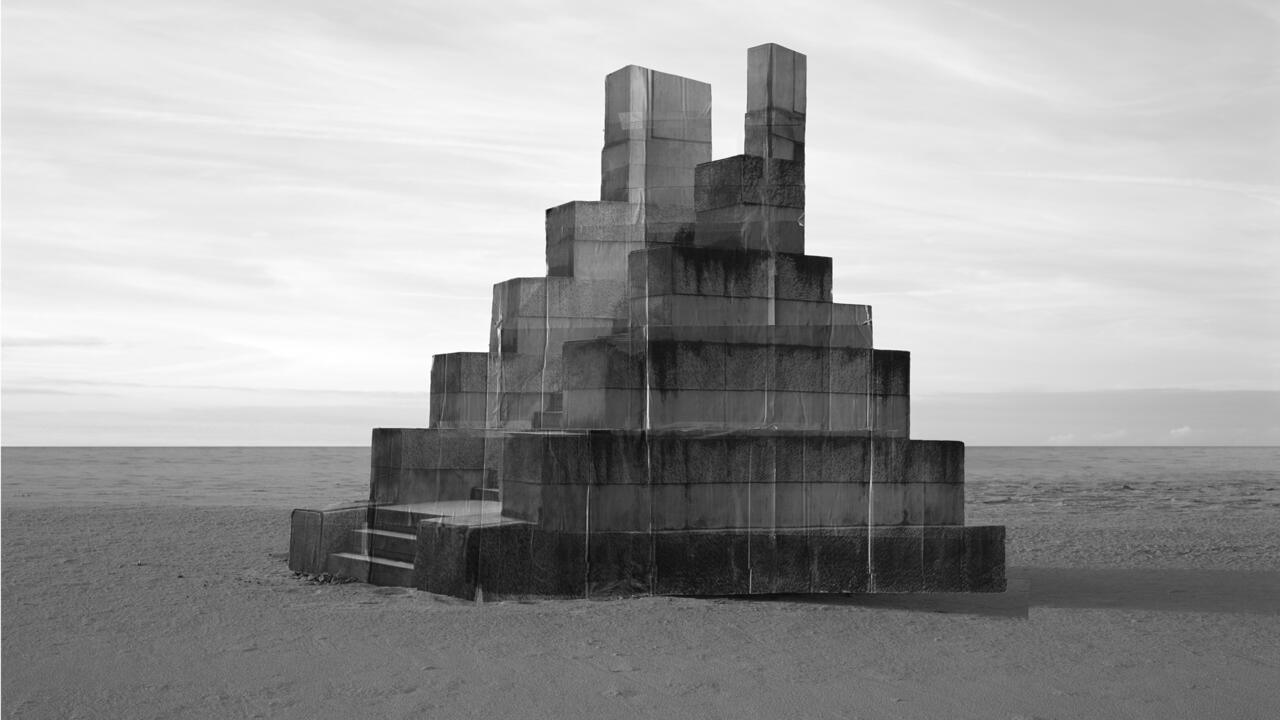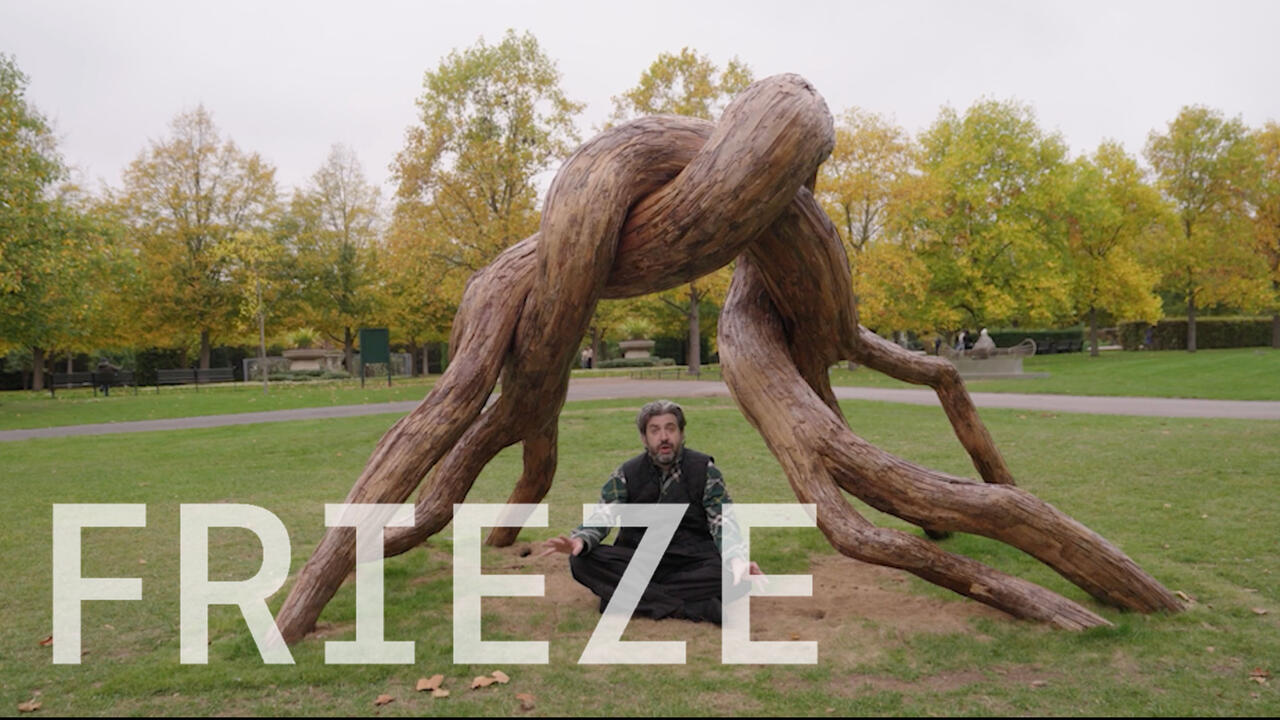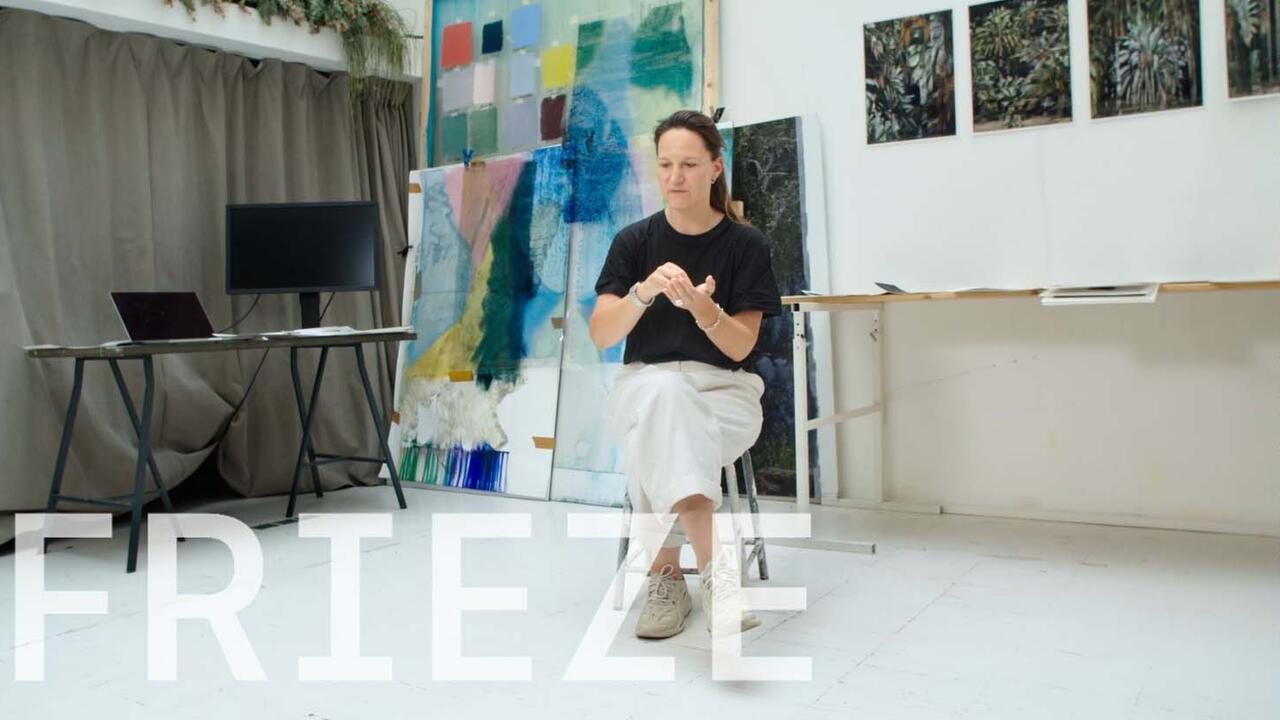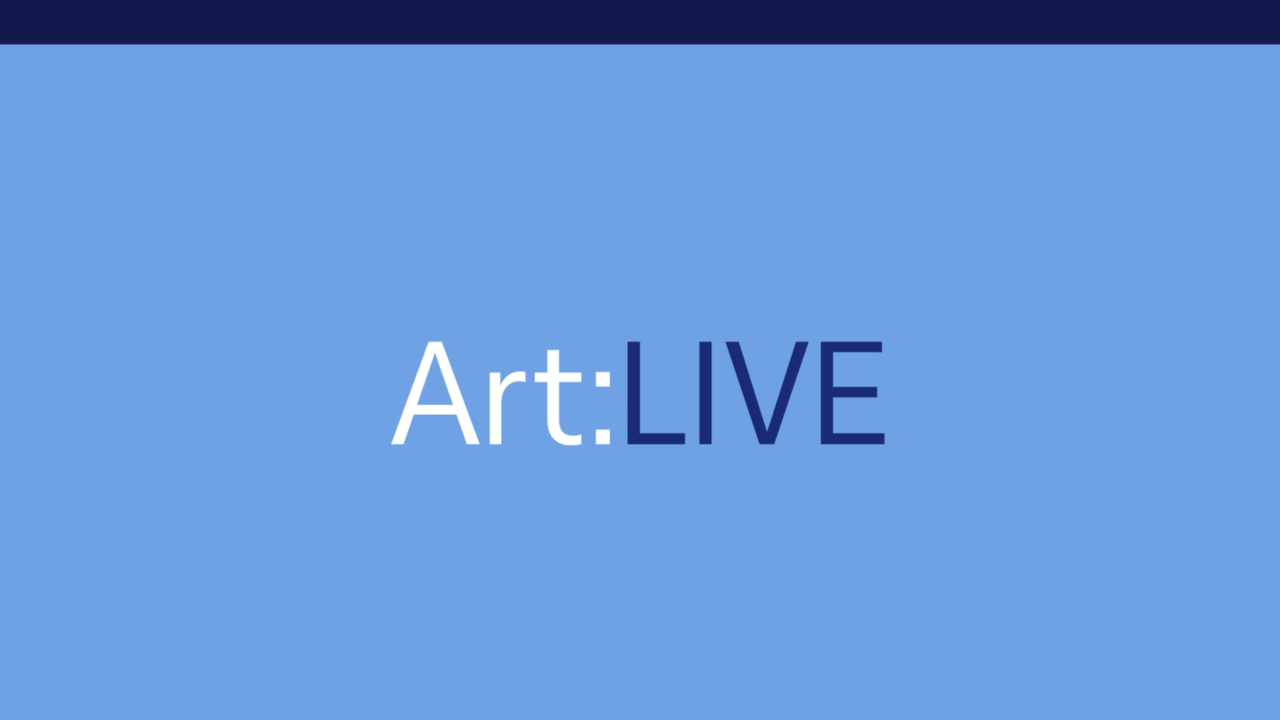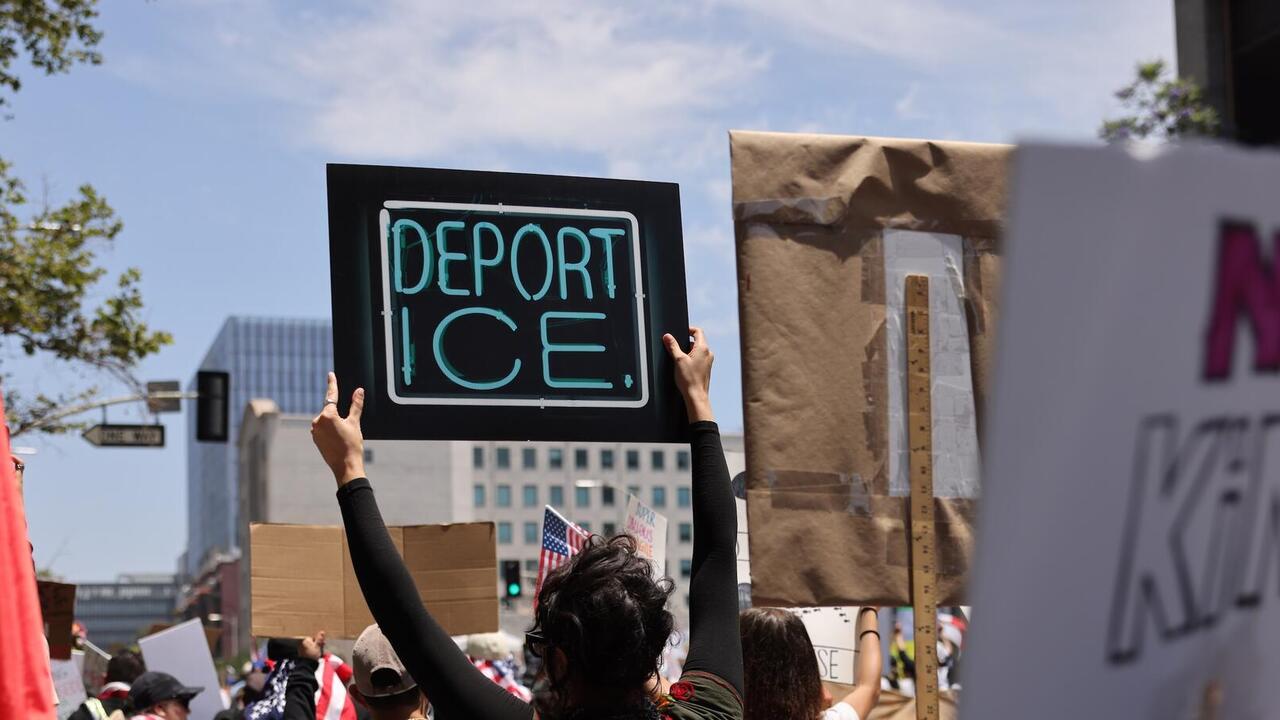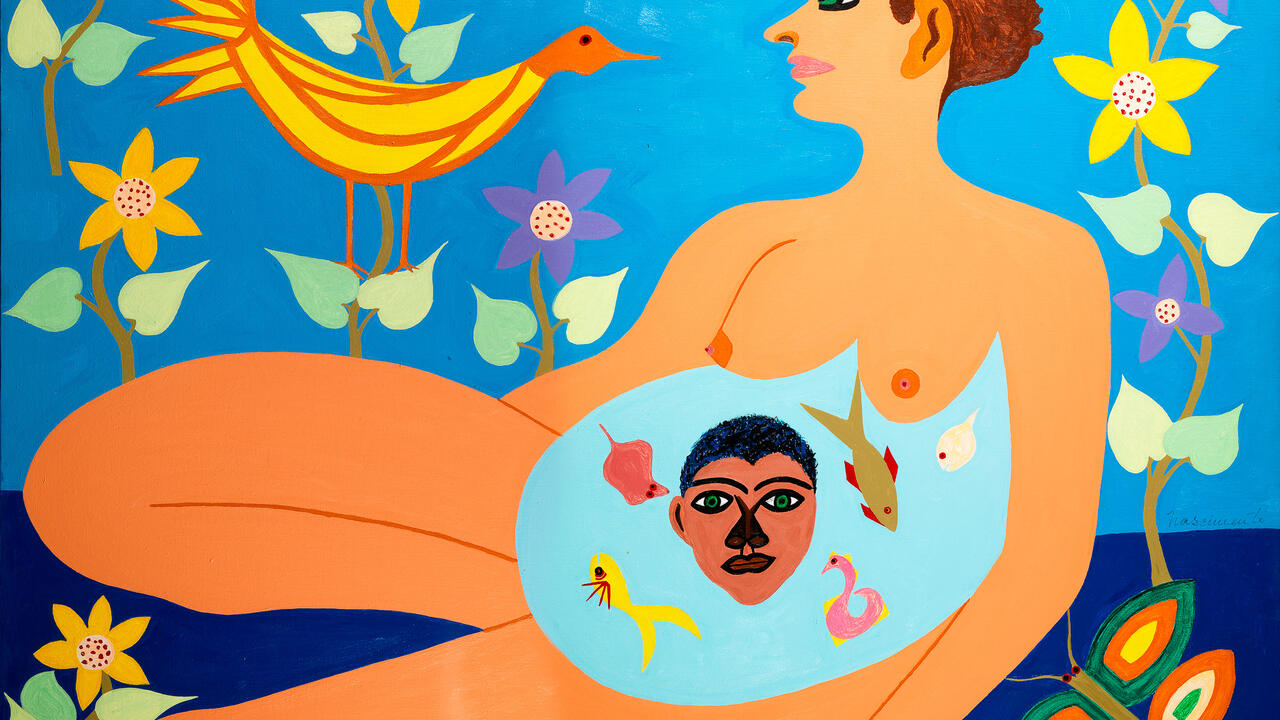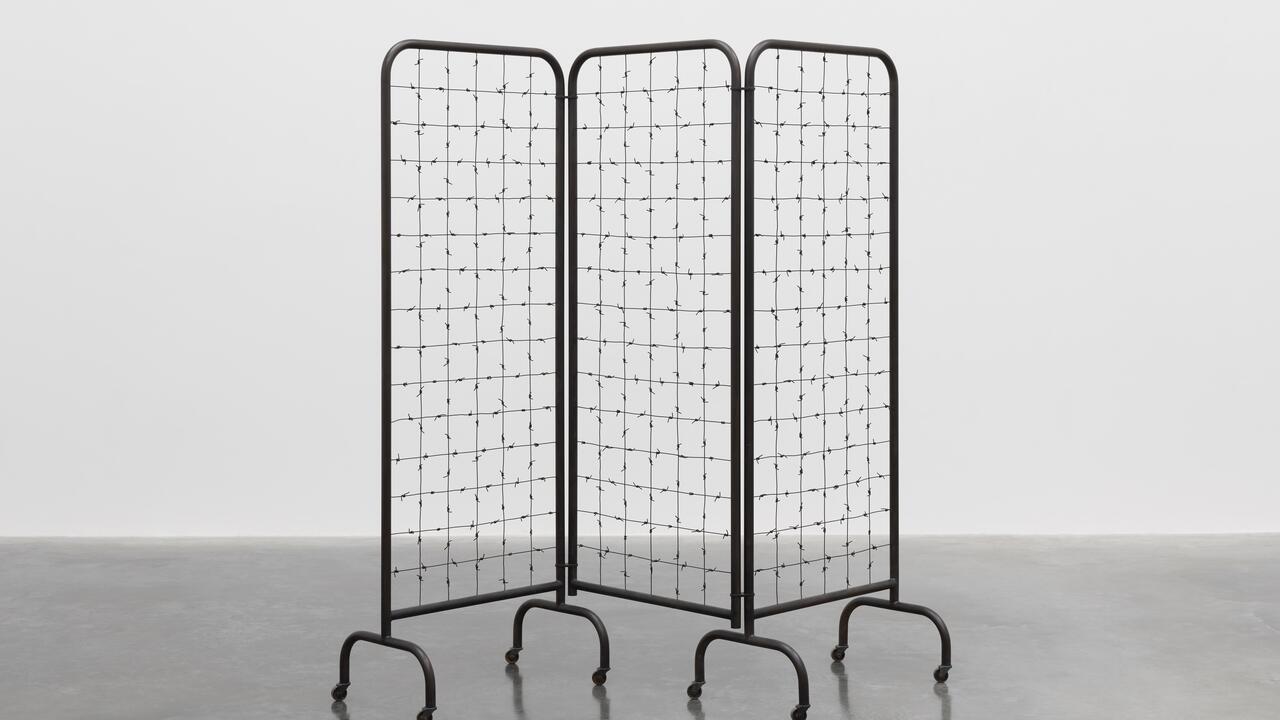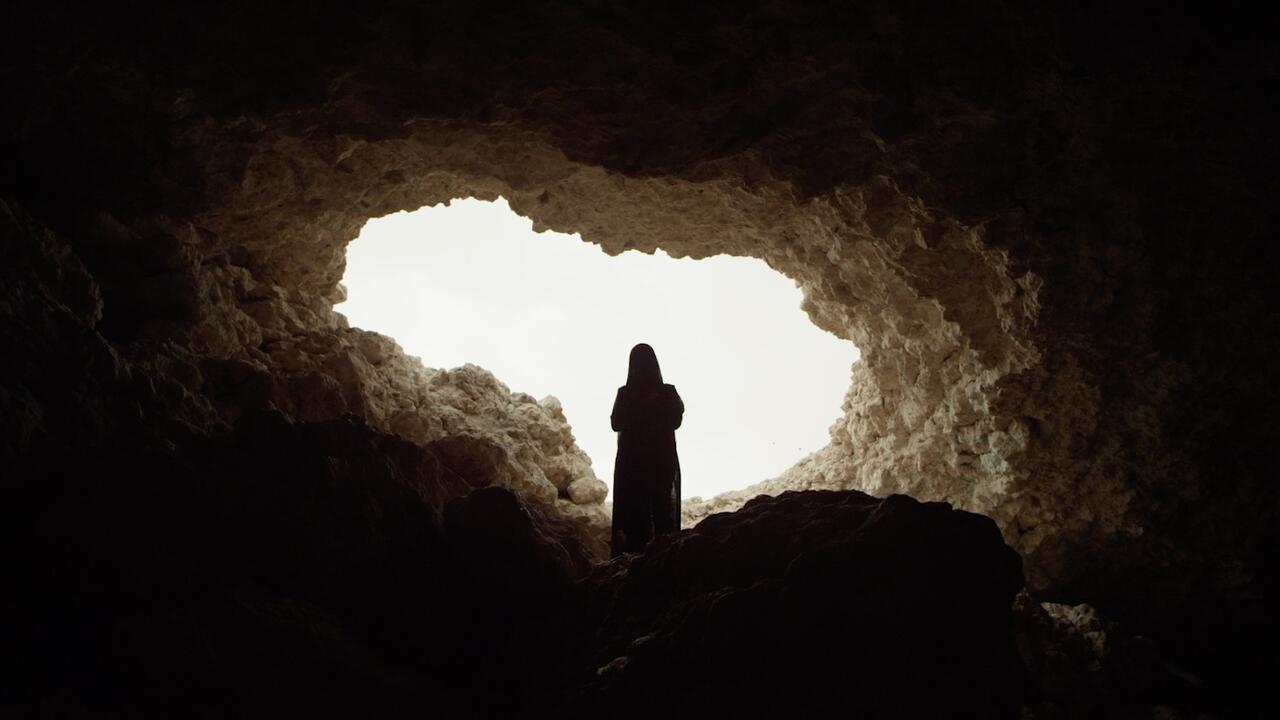ruby onyinyechi amanze On the Humanity of Drawing
On the occasion of her Frieze New York 2019 presentation, ruby onyinyechi amanze discusses movement, time and her love affair with paper
On the occasion of her Frieze New York 2019 presentation, ruby onyinyechi amanze discusses movement, time and her love affair with paper

MM: Your works bristle with different chronologies and cultural registers. When do you feel they’re set?
ROA: There’s no linear time in my mind. In some ways, we are living through the creation of soon-to-be ‘mythologies’; the futuristic feels present in the now. Time seems so warped and unreal and I intentionally want my drawings to likewise feel a bit out of sequence. Does your work happen in process, or do you approach the page with a plan? Once I’ve started work on a drawing, I leave it overnight so it’s ready for me in the morning. Drawings are notorious for rearranging themselves in the night! We have a conversation (the drawing and I) to see where to go next. New ideas flow mid-way through working. There are things I can’t know until my hands are moving.
MM: So it’s a back and forth between knowing and not knowing. When did drawing become so central to your practice?
ROA: Drawing was my first artistic expression, as it is for many people. I took to photography and textiles as a student, then, in grad school, I returned to the page, using typewriter ribbon. I didn’t realize I was drawing at the time: it wasn’t until 2006 that I consciously made ‘drawings’. I’ve done nothing
but draw since. I call everything I do a drawing. It feels like we’re married.
MM: Could you describe your relationship with drawing materials, like paper?
ROA: It’s an ongoing love affair. The paper section at New York Central Art Supply (sadly, no longer) was like heaven. I used to work on handmade Japanese papers. Super thin, translucent, cream, slightly textured, with long fibers. Then I craved some smoothness and weight. My current papers are 250, 335 and 640 gms: pretty heavy in the paper world. I spent some time working with fabric too. Both fabric and paper hold memory; they absorb information and they maintain a charge. The paper is an active participant in the drawing process. I’m not drawing on paper. I’m drawing with it.
MM: The strong poses of your figures make me wonder if dance is an influence?
ROA: Absolutely! Dancing and swimming in particular, are very important to the drawings and physical movement is an enormous part of my research. I’m a runner, athlete and a secret dancer. I practice Gaga — a form of movement research. I collect images of dancers, I watch dance performances and I read books by choreographers. I performed with my friend Tamar Ettun’s ensemble, The Moving Company one year. Moving in space helps me think. For a period, I’d spend the better part of the day in the studio in roller skates, rolling every- where I needed to go. I like to think of myself as a choreographer of sorts, organizing movement across a plane. The paper space feels like it has the potential to come alive in the way a stage does.
MM: Do you think drawing is a vulnerable practice, compared to, say, painting?
ROA: Drawing is funny. Sometimes I think it pretends to be vulnerable. Or rather, it lets people believe that narrative while also boldly defying it. Drawing has had its waves and surges in contemporary discourse, and though, yes, it still leans largely to the analogue, the rise of technology only introduces new innovations in drawing — it doesn’t erase the history. The Drawing Center in New York and the Drawing Room in London are two spaces I very intentionally wanted to be a part of in some way — because my work is drawing and I want it to be at home with its kind. I think that’s important to choose your own box. That’s my top pick ‘box’; before being African or Black or a Woman. I think those spaces exist more for the joy of drawing, rather than the protection of it. Drawing is so human on a really basic level; it isn’t going anywhere.
MM: What are you planning to present in the exhibition at Frieze New York?
ROA: I’ll be showing recent drawings from my last exhibition and some new works. I’m thinking about extending beyond the page to include poetry in wall texts; and live plants, like those in my work. The way the drawings are presented will be more dimensional.
MM: Of all your artworks, which is your favourite title?
ROA: I’ll go with Bridged [the ocean only loves, never divides] (2015). The ocean is borderless and expansive, but an intimate and comforting space. I’ve always been interested in middle spaces, a balancing act between two worlds. Being in the air, flying, floating, soaring: my drawings are ultimately about this passing. The creation of a third space.
This article appeared in Frieze Week New York 2019
Main image: ruby onyinyechi amanze, I was never really there (detail), 2018. Courtesy: the artist and Goodman Gallery, Cape Town










